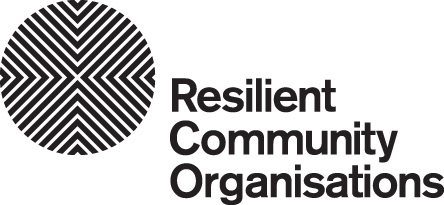'What If' Examples
Examples are a great way of getting the idea of what’s involved in “what if” thinking.
Below are four examples.
- Impacts of bushfire on outreach home and community care (HACC) service provision
- Impacts of flood on residential aged care service provision
- Impact of cyclone on emergency relief service provision
- Impact of extreme heat on a provider of Out of Home Care (OOHC) services to children and families
These examples were developed based on the experiences of community organisations across the country who participated in workshops that ACOSS conducted with Climate Risk as part of the Adapting the Community Sector for Climate Extremes project.
Each one is a case study that explores the range of ways in which disruptions to infrastructure and critical services caused by specific climate events might lead to the failure of service delivery.
The five examples described below synthesise and present some of the common community sector service delivery ‘failure modes’.
From potential failures, risks can be identified.
Organisations can then adapt - or build their resilience - to the potential risks. In Step 4b, Preparation and Adaptation, each of these four examples are used again to how organisations could prepare and adapt to minimise the risks that led to the failures.
There are diagrams used in each example to show relationships between various parts of the system under study. The lines in the diagrams are colour coded:
Example 1: Impacts of Bushfire on Outreach Home and Community Care Service Provision
This example describes the ways in which bushfire impacts lead to service failure in an outreach aged care service provider reliant on voice over internet provided (VOIP) communications technology and the consequences for its clients.
A bushfire in Victoria causes a complete and indefinite power outage to the organisation. It also leaves key roads in the service area inaccessible. As a result, the organisation loses access to its electronic client records database and to its VOIP telecommunications system.
Without access to its client database and telecommunications system, the organisation is unable to contact its clients, who number in the several hundred, unless they send workers and volunteers to their homes. However, with key roads inaccessible, this represents an occupational health and safety risk for workers and the organisation.
Under these circumstances, the only course of action available to the organisation is to contact emergency services to alert them to the risks faced by their clients. Thus the failure of the community organisation directly increases the demand on the emergency services, which would not have been the case if alternative telecommunications systems had been available.
The loss of the VOIP system also means that clients cannot contact the organisation, as both outgoing and incoming calls are affected. This may lead to increased demand for assistance from other aged care service providers in the region that are not reliant on VOIP telecommunications. It may also lead to increased demand on emergency services to check the safety of older people in their homes.
Direct consequences for clients include loss of a range of services essential to meeting their basic needs, including shopping, meal provision, bathing and personal care and administration of medications. Without access to these services, vulnerable older clients face isolation in their homes, increased risk of infection and disease and even death.
A key role of community organisations that is not captured in the transfer of responsibility to emergency services is an intimate knowledge of the people affected and their circumstances. For example, where evacuation is required, the process may be complicated by people refusing to leave their homes or their companion animals behind. Due to social isolation, people develop very strong bonds with companion and assistance animals and being forced to evacuate without them can result in severe distress and grief with subsequent implications for community organisations who provide support beyond the response and recovery phase.
Example 2: Impacts of Flood on Residential Aged Care Service Provision
This example describes ways in which flood impacts lead to service failure in a residential aged and disability care facility and the consequences for its clients.
A flood in Brisbane causes extensive damage to key access roads to the organisation’s main residential care facility. The power supply to the organisation is also disrupted. The organisation has an alternative, though smaller, facility in a nearby area and has backup generators that can meet some of the facility’s power needs for a few days.
Some high-needs patients are moved to the alternative facility, which faces a lower risk of flooding, before the flood occurs. This places additional strain on that facility, which is already operating at full capacity, leading to increased pressure for staff, increased discomfort for clients and increased use of goods and services in that facility, including food, energy and medical supplies.
After the floods, key roads are inaccessible which leaves workers unable to access the facility, including health care and administrative staff, cooks and cleaners. This results in one shift of workers being on call 24 hours a day to meet clients’ needs until the facility becomes accessible again.
The organisation is also inaccessible to suppliers, on whom they rely to provide food and medical supplies, and to external service providers such as waste and medical waste disposal. The organisation faces the depletion of its stores of food and medical supplies, which will lead to deteriorating health outcomes and even death for clients. The failure of waste disposal systems will result in the build-up of regular and medical waste on the premises, exposing the organisation and its clients to increased risk of infection and disease outbreaks.
Disruption to the power supply also increases the risk of being unable to run essential and life-saving medical equipment and to refrigerate food and medical supplies. Impacts to clients include increased risk of infection and poisoning from spoiled food and contaminated water supplies and to increased risk of death due to the failure of life-saving medical equipment.
When the organisation can be evacuated, clients are transferred to alternative care facilities, peer organisations and the public health system. As a result these other organisations face increased demand for and strain on their own services, to the detriment of current and incoming clients. A ripple of strain is seen to flow through the system.
Example 3: Impacts of Cyclone on Emergency Relief Service Provision
This example was developed from a case study provided by an Emergency Relief provider in Darwin. The organisation provides emergency relief, financial counselling and gambling addiction support services to people living on low incomes and experiencing financial hardship. The case study describes the impact of a cyclone on emergency relief provision.
A cyclone in Darwin causes major damage to the built environment and significant disruptions to critical infrastructure services, including power, water and telecommunications. Many local businesses, including significant numbers in the tourism industry are caught unprepared, suffering major losses including to offices, vehicles and equipment. Many local employees are also directly affected by the cyclone and are unable to work. As a result of these losses, many businesses are forced to close temporarily. As the recovery process begins, some discover they are inadequately insured for the losses they have sustained; faced with the high costs of recovery, up to 20% close permanently. With fewer tourists coming to the region in the aftermath of the cyclone, more businesses in that industry are forced to reduce staff working hours, introduce redundancies and even to close.
The local emergency relief provider also sustains damage to its premises and remains closed for two weeks. A number of other local community services are unable to provide services in the immediate aftermath of the cyclone. Several remain closed up to a month later. When the emergency relief provider is able to resume service provision, it does so with 50% of its normal staffing capacity, as workers and volunteers resign or take extended leave to deal with the direct impacts of the disaster. However, it experiences an immediate surge in demand for food, clothing and financial assistance as people already in financial crisis prior to the cyclone struggle to recover. At the same time, it also experiences a surge in demand from members of the community who have lost their jobs due to business closures and who are unable meet their financial obligations, including mortgage payments. These are people who have never before had to seek charitable assistance to meet their basic needs.
With limited resources and with several other community services still closed, the emergency relief provider is unable to meet demand for services and begins to place strict limitations on the amount of assistance it provides to individuals. People are turned away from the service if they have requested assistance within the previous 6 month period. Without access to the assistance that enables them to manage their weekly and monthly budgets, the rates of poverty and homelessness in the community increases as mortgages are foreclosed, tenants are evicted from rental properties for failing to meet rent payments and families struggle to buy sufficient food to feed their children. As people fall further into financial hardship and crisis, rates of depression also increase. As a result, other parts of the social service system become strained, as people present at hospitals, community mental health and other crisis centres for assistance.
The increasing numbers of people approaching the service and the growing complexity of their needs begins to affect staff morale; several workers suffer burnout and the rates of staff turnover also increase. Already critically strained by the increase in demand and the loss and turnover of its staff, the organisation is at risk of closing altogether.
Example 4: Impact of Extreme Heat on an Out of Home Care Provider
This example was developed from a case study provided by a youth and family service that delivers Out Of Home Care services to young people and children in foster care, their foster parents and families in Perth. Services provided include parenting support for families at risk of having children removed; respite care for foster parents; and health care, counselling and education support services for vulnerable children and young people in foster care. It describes the impact of extreme heat on Out Of Home Care service provision.
The youth and family service provider has an internal workplace health and safety policy, which prevents staff from providing in-home services to children and families in extreme temperatures if clients’ homes match or exceed outside temperatures.
An extreme heat event occurs in Perth, resulting in temperatures of 40 degrees and above for a record number of consecutive days. As a result, staff members are forbidden by the organisation’s policy to provide in-home services to clients whose homes are known to lack air conditioning or adequate cooling. As a result, families, children and foster carers are unable to access counselling, parenting support, supervision, respite and other support services. At the same time families', children's and carers' coping mechanisms may be under particularly high levels of strain due to the impacts of extreme heat and heat stress.
For families, lack of access to parenting and other support service provision may increase the risk of harm to children or of their removal by child protection authorities. Alternatively, children who have been assessed as able to return to their families may be unable to do so due to the disruption of transition support services. Without access to respite care, foster parents may be unable to manage their caring responsibilities and return children to state care. Without access to counselling, healthcare and other support services, children may experience adverse impacts to their health and wellbeing.





